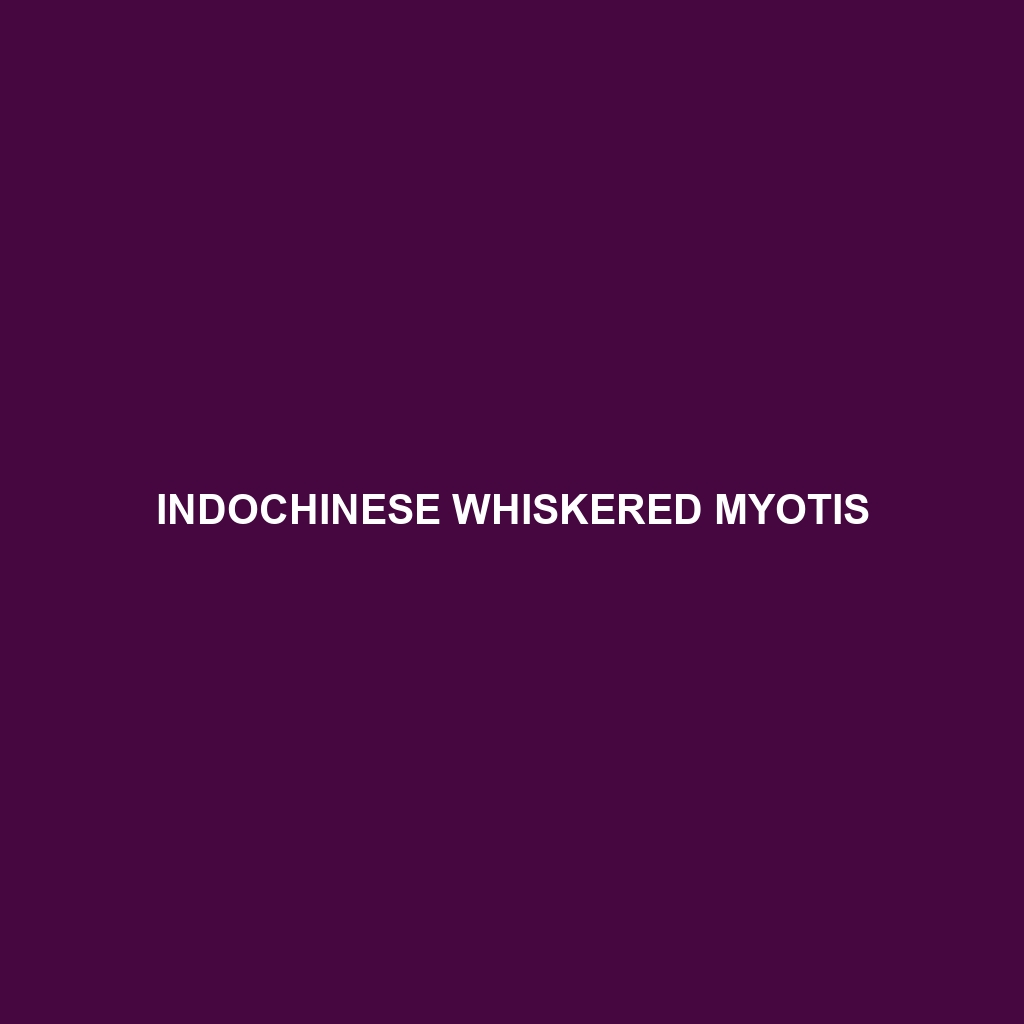Indochinese Whiskered Myotis
Common Name: Indochinese Whiskered Myotis
Scientific Name:
Habitat
The Indochinese Whiskered Myotis primarily inhabits the lush forests and mountainous regions of Southeast Asia. This bat species is commonly found in countries such as Vietnam, Thailand, and Laos, favoring environments such as tropical and subtropical forests, caves, and agricultural areas. The presence of water sources nearby is also typical, as these areas provide essential foraging grounds.
Physical Characteristics
The Indochinese Whiskered Myotis is a medium-sized bat, measuring approximately 9 to 10 centimeters in body length with a wingspan that can reach up to 27 centimeters. Its fur is generally a mix of gray and brown shades, with lighter underparts and distinct dark whiskers that give it its name. The species exhibits elongated forearms and a characteristic pointed nose, which enhances its echolocation capabilities.
Behavior
Indochinese Whiskered Myotis is predominantly nocturnal, emerging at dusk to forage for food. These bats are known for their agile flight and ability to navigate through complex forest environments. They typically roost in small colonies within caves or tree hollows and communicate through a series of echolocation calls, which aid in locating insects during their nightly hunts.
Diet
The diet of the Indochinese Whiskered Myotis mainly consists of various flying insects, including moths, beetles, and flies. As an insectivorous species, they play a crucial role in controlling insect populations, making them an important part of their ecological niche. Their foraging behavior is fundamental for maintaining the balance in their natural habitats.
Reproduction
Breeding season for the Indochinese Whiskered Myotis typically occurs from late spring to early summer. Females usually give birth to one or two pups after a gestation period of approximately two months. The young are born with their eyes closed and are dependent on their mothers for food and protection until they can fly, usually around four to five weeks after birth.
Conservation Status
Currently, the Indochinese Whiskered Myotis is classified as “Least Concern” by the IUCN Red List; however, habitat loss due to deforestation and agricultural expansion poses threats to its population. Conservation efforts are essential to ensure the continued survival of this species in its natural habitats.
Interesting Facts
One fascinating fact about the Indochinese Whiskered Myotis is its exceptional ability to echolocate in densely vegetated environments, allowing it to thrive in complex forest ecosystems. Additionally, this species has been observed using its whiskers to detect changes in airflow, further enhancing its foraging efficiency.
Role in Ecosystem
The Indochinese Whiskered Myotis plays a vital role in its ecosystem as a natural pest controller. By consuming large volumes of insects, they help maintain ecological balance and promote agricultural health. Their presence also supports the food web, serving as prey for larger predators and contributing to biodiversity in their habitats.
